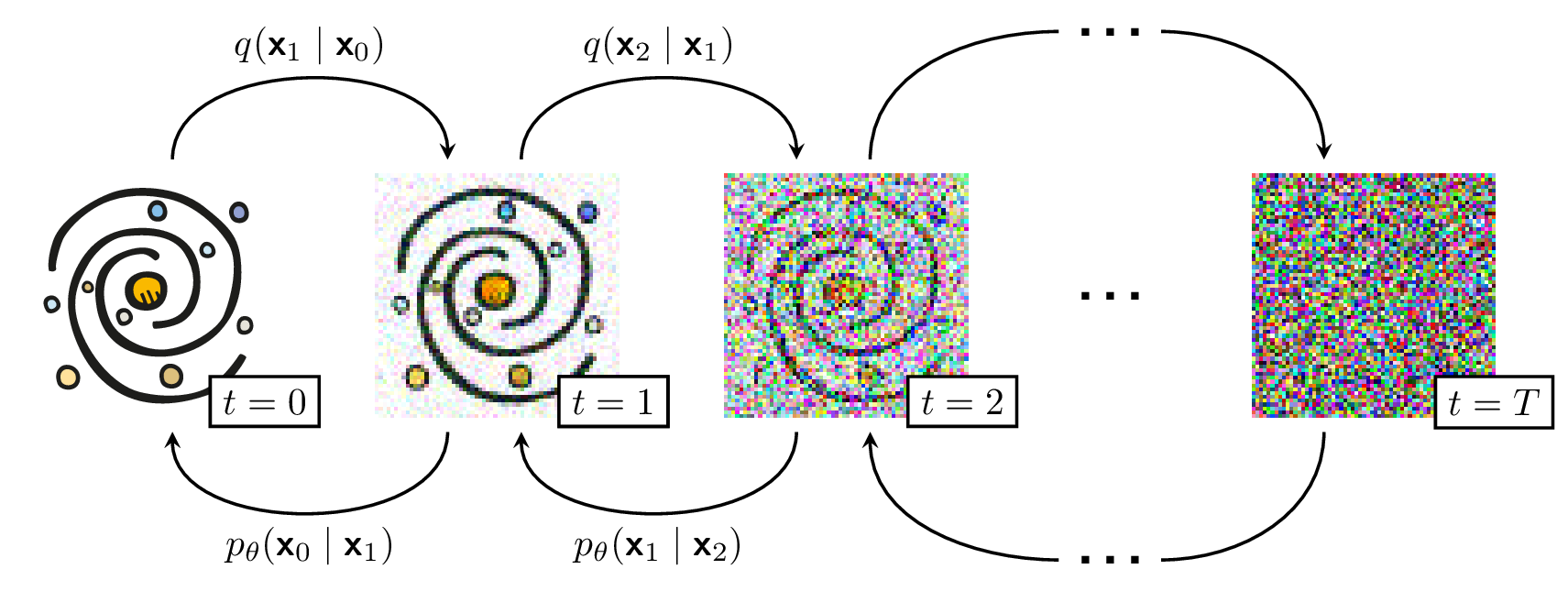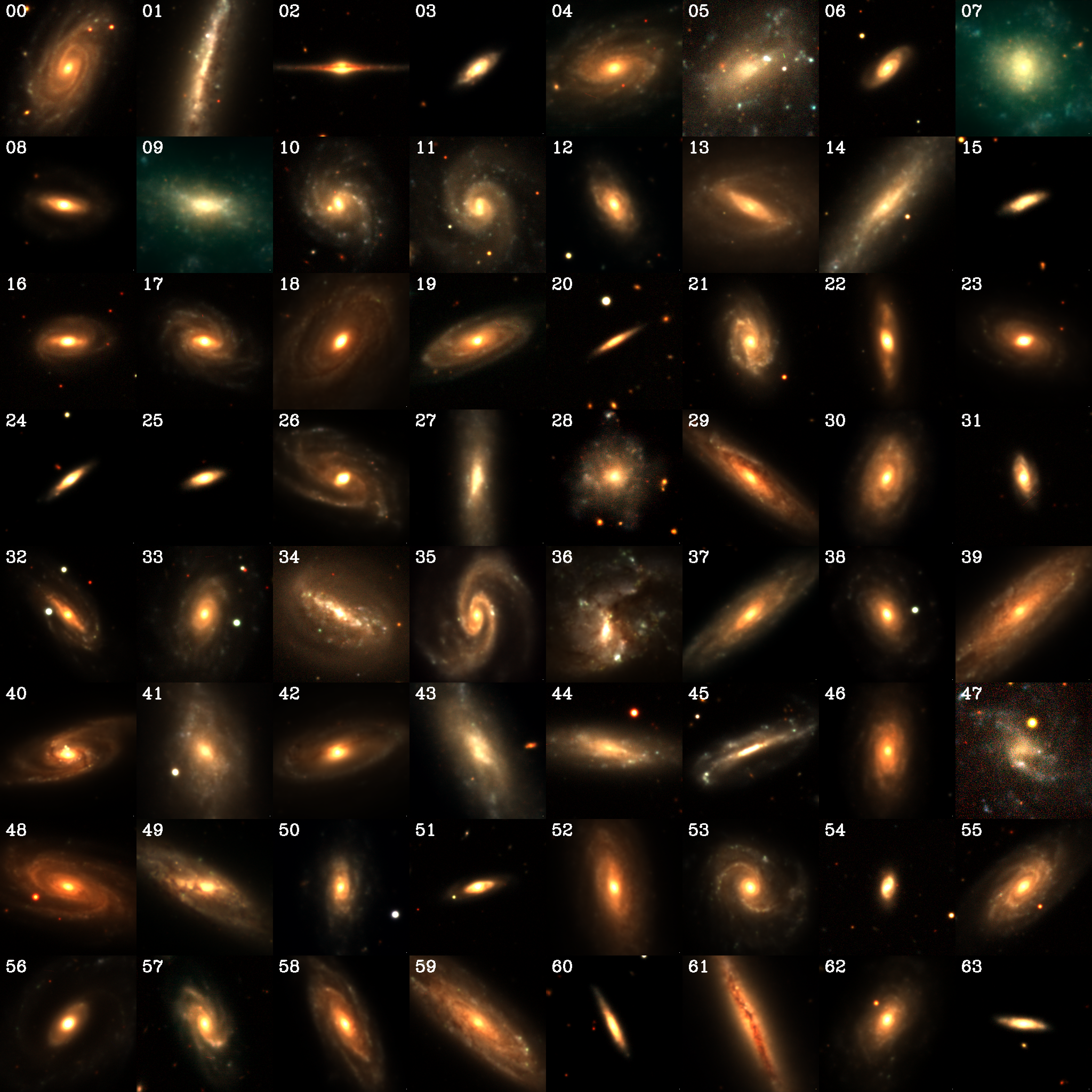Official code for 'Realistic galaxy simulation via score-based generative models'. We use a score-based generative model to produce realistic galaxy images. This implementation is based off of Phil Wang's PyTorch version which is in turn transcribed from Jonathan Ho's official Tensorflow version here.
Below are some outputs from our model. Half of these galaxies are real and half are generated. Check out the paper for the answer key.
Downloading the PROBES dataset is straightforward:
cd data/probes/ && mkdir raws galsbash get_probes.shpython preprocess.py
Downloading the SDSS dataset is a little more finicky since it is so large. Here we speed up the process via GNU Parallel (so make sure it is installed!):
cd data/sdss/ && mkdir raws galsbash wrangle_csv.bashpython preprocess.py
Once your datasets are downloaded you can train by running:
python train.py --dataset $DATASET --milestone $MILESTONE
where $DATASET is either probes or sdss, and $MILESTONE is the global step of
a trained model that you want to continue from. If there is no previous training
run, it is set as 0.
To run inference on your trained model you can do:
python infer.py --dataset $DATASET --milestone $MILESTONE --batches $BATCHES
where $DATASET is either probes or sdss, and $MILESTONE is the global step of
a trained model that you want to infer from. $BATCHES is the number of batches we
want to process (batch size is set as 96 here but can be changed within infer.py).
You can find the pretrained models that we have used in the paper on Zenodo:
Copy them to your logdir, and run inference/continue training as shown above.
More galaxies can be found here.
We also used a DDPM to generate fake Astronomy Picture Of the Day imagery. Check it out.
If you find this work useful please consider citing our paper:
@article{smith2021,
title={Realistic galaxy image simulation via score-based generative models},
author={Michael J. Smith and James E. Geach and Ryan A. Jackson and Nikhil Arora and Connor Stone and St{\'{e}}ephane Courteau},
journal = {arXiv e-prints},
year={2021},
eprint = {2111.01713}
}Also be sure to check out Jonathan Ho's implementation here:
@article{ho2020,
author = {{Ho}, Jonathan and {Jain}, Ajay and {Abbeel}, Pieter},
title = "{Denoising Diffusion Probabilistic Models}",
journal = {arXiv e-prints},
year = 2020,
eprint = {2006.11239},
}And Jascha Sohl-Dickstein's original DDPM paper:
@article{sohl-dickstein2015,
author = {{Sohl-Dickstein}, Jascha and {Weiss}, Eric A. and {Maheswaranathan}, Niru and {Ganguli}, Surya},
title = "{Deep Unsupervised Learning using Nonequilibrium Thermodynamics}",
journal = {arXiv e-prints},
year = 2015,
eprint = {1503.03585}
}AstroDDPM is free software: you can redistribute it and/or modify it under the terms of the GNU Affero General Public License as published by the Free Software Foundation, either version 3 of the License, or (at your option) any later version.
AstroDDPM is distributed in the hope that it will be useful, but WITHOUT ANY WARRANTY; without even the implied warranty of MERCHANTABILITY or FITNESS FOR A PARTICULAR PURPOSE. See the GNU Affero General Public License for more details.
You should have received a copy of the GNU Affero General Public License along with AstroDDPM. If not, see https://www.gnu.org/licenses/.

